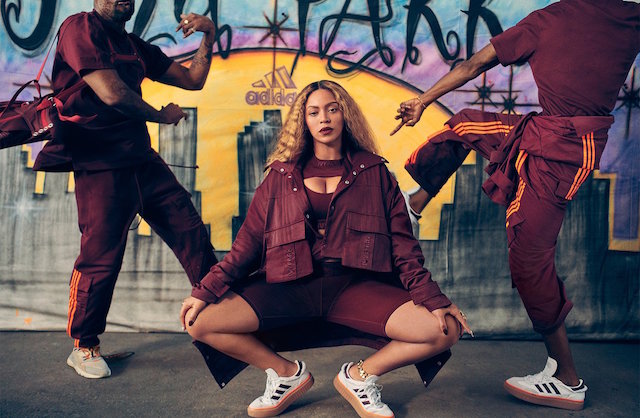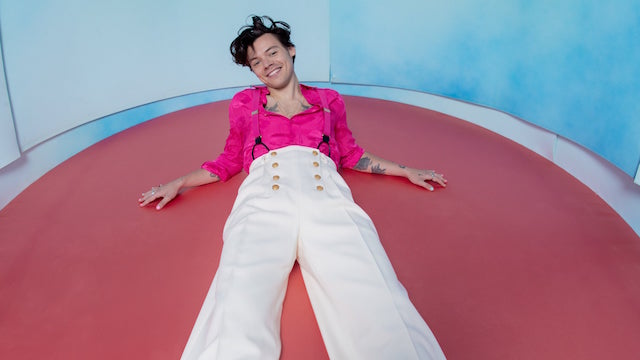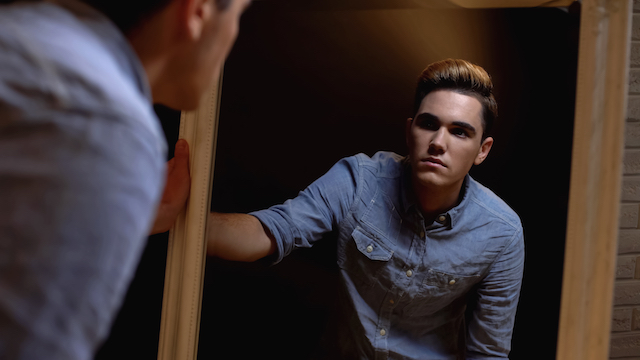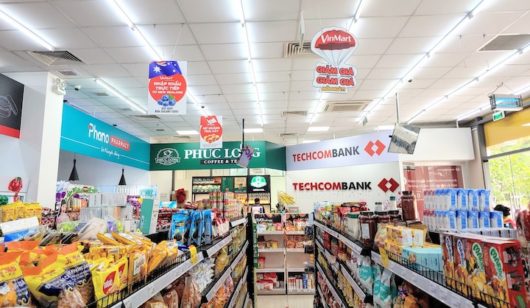Beyonce’s January drop of her latest Ivy Park collection included a subtle shift: it’s positioned as gender neutral.
Whether you want to call it “gender neutrality”, “androgyny” or “unisex”, gender expression is being reworked by younger consumers. They’re abandoning the notion of binary definitions of “male” and “female”.
Read the first part of our two-part series on non-binary fashion here.
Of course, the blurring of gender lines is nothing new in fashion. Icons include Yves Saint Laurent’s 1966 Le Smoking tuxedo for women and Jean Paul Gaultier’s 1985 skirt for men. What is new is the broader, consumer-driven cultural conversation around gender and sexuality.

Digital platforms have enabled marginalised people to form community online, amplifying understanding of diverse viewpoints. Gender is now operating on a moving scale – consumers can use the scale as an expression on any given day.
Data suggests this is an enduring shift in values rather than a passing fad. According to research by GLAAD, an organisation that champions LGBTQ rights, 12 per cent of American millennials identify as transgender or gender non-conforming. That’s double the amount of the preceding generation. The report also found that 27 per cent of millennials know someone who is transgender, versus just 9 per cent of Americans over the age of 45.
And in a survey of 4500 Gen Z consumers, Wunderman Thompson Intelligence’s Generation Z Asia report found eight out of 10 respondents say gender doesn’t define a person as much as it used to.
Who wore it best?
A look at Gen Z’s current role models highlights the broad range of gender non-conforming personas. Harry Styles stands out, with his 26 million Instagram audience fanatical for his pastel nails, pearl necklace, brocade fabric suits and pussy bow shirts.

In a December interview with the Guardian on the subject of his style, he stated, “[I don’t do it] because it makes me look gay, or it makes me look straight, or it makes me look bisexual, but because I think it looks cool. And more than that, I dunno, I just think sexuality’s something that’s fun.”
It was perhaps 2019’s Met Gala theme, “Camp: Notes on Fashion”, hosted by Styles in a sheer blouse and single pearl earring, that launched Timothee Chalamet onto the global fashion scene. He won the top male spot in Lyst’s Most Influential in Fashion 2019 report, which takes into account search volume, social media, sales and designer ranking.
Chalamet is often seen in fluid tailoring and feminine blouses on the red carpet. But his style isn’t limited to subversive or camp gender- mixing. He also dresses androgynously, including the cerulean blue Haider Ackermann colour-block look he wore for the Sydney premiere of The King, his latest film.
At the Academy Awards last year, actor Billy Porter appeared on the red carpet in a jaw-dropping tuxedo gown designed by Christian Siriano, arguably propelling him into fashion icon status.
“My goal is to be a walking piece of political art every time I show up. To challenge expectations. What is masculinity? What does that mean? Women show up every day in pants, but the minute a man wears a dress, the seas part,” Porter wrote in Vogue about his outfit choice that night.
“People are going to be really uncomfortable with my black ass in a ball gown – but it’s not anybody’s business but mine.”
The hugely influential K-pop stars in Southeast Asia have driven consumers locally. Its stars, like Kang Daniel of Wanna One and the Gucci-drenched BTS band members, are pros at mixing jewellery, accessories, atypically feminine garments and makeup.
According to Amelia Teh, head of business intelligence at Omnilytics, “Korean fashion is known to defy the boundaries of stereotypical gender-labelled clothing and diverging towards a more gender-neutral approach. The rise of streetwear further blurred the lines of gender specification. Åland, Seoul’s leading streetwear retailer which operates a flagship store in Brooklyn, New York, has over 60 per cent contribution of unisex assortment.”
Teh attributes the shift to “exponential economic success” of the region, with more “affluent families sending their children for education overseas, their new influences break down the traditional conservatism of the older generations”.
A crop of new brands
Not only are existing brands, like Acne Studios, Adidas Originals, H&M and Tommy Hilfiger responding to the gender-neutral shift with crossover merchandise, but there is also a wave of new entrants to the market. Tomboyx, a new brand from the US, produces ungendered underwear. A range of lengths ensures fit “no matter your size or equipment”!
In retail, The Phluid Project is an ungendered retail store that opened in Brooklyn in late 2018. The store also acts as a platform for community, hosting events and discussions.
Australia has its own gender-inclusive brands too, including Melbourne-based Best Jumpers, Ten Pieces and A.BCH, which was founded in 2017 by Courtney Holm. Though the brand’s website is separated into men’s and women’s, most items are styled on either gender. The brand’s aesthetic, muted tones, natural fibres and boxy shapes perfectly appeal to all.
It’s almost by chance that things turned out like this.
“When we did our first round of style research and development, we’d designed specific pieces for men and women but we also encouraged people to try on anything they wanted and purposely didn’t display the pieces in categories,” Holm shared.
“What we noticed was that men tried on traditional women’s pieces and vice versa. They didn’t even realise at the time.”
Subsequently the brand is “always looking for ways to make our clothes more inclusive and wearable for all”, with its linen shirts, trousers, boxy shorts and sweatshirts selling best across genders.
Where to start?
According to JWT Intelligence research, only 37 per cent of Gen Z and 36 per cent of millennials shop the accessories category by gender. Accessories only currently account for 9.6 per cent of Australia’s gender neutral assortment. It’s an easy way in, without constraints of fit.
A good place to start is with the styling and casting of models in campaign imagery – make it inclusive and give the stylist free rein over both men’s and womenswear.
As Holm pointed out, “It’s up to us as the brand to portray through our digital communications and imagery just how great garments can look on men, women, non-binary, short, tall, slim, curvy, mature, youthful and everyone in between.”
It’s crucial to talk to your customers to find out what they want and need. Open the conversation and find ways for store staff to share anecdotal insight on which products have non-binary appeal. From here, shift the way your customer profiles are built, making them less prescriptive and encapsulating the new values.
The real challenge lies not in fit, but in the way retail businesses are structured and stores are laid out. Designers and buyers at most retailers are separated into men’s and women’s teams, with reporting and budgets specific to each. As we move into the future of fashion, we’ll need to take a more agile approach to team function.
Whether you see a future with product defined by occasion or fit and not gender, or whether it’s styling the occasional men’s piece on women, our consumers are changing and so must the industry. Defying that change will only alienate Gen Z consumers.
- Katie Smith is a retail and trends strategist, with a deep love of data-led insights and technology. Her research is used by brands and retailers on four continents to build out effective product offerings and connect with their consumers. Contact: hi@katiesmith.me
- This feature originally appeared in Inside Retail Asia’s magazine edition. For information on subscribing visit our shop.






